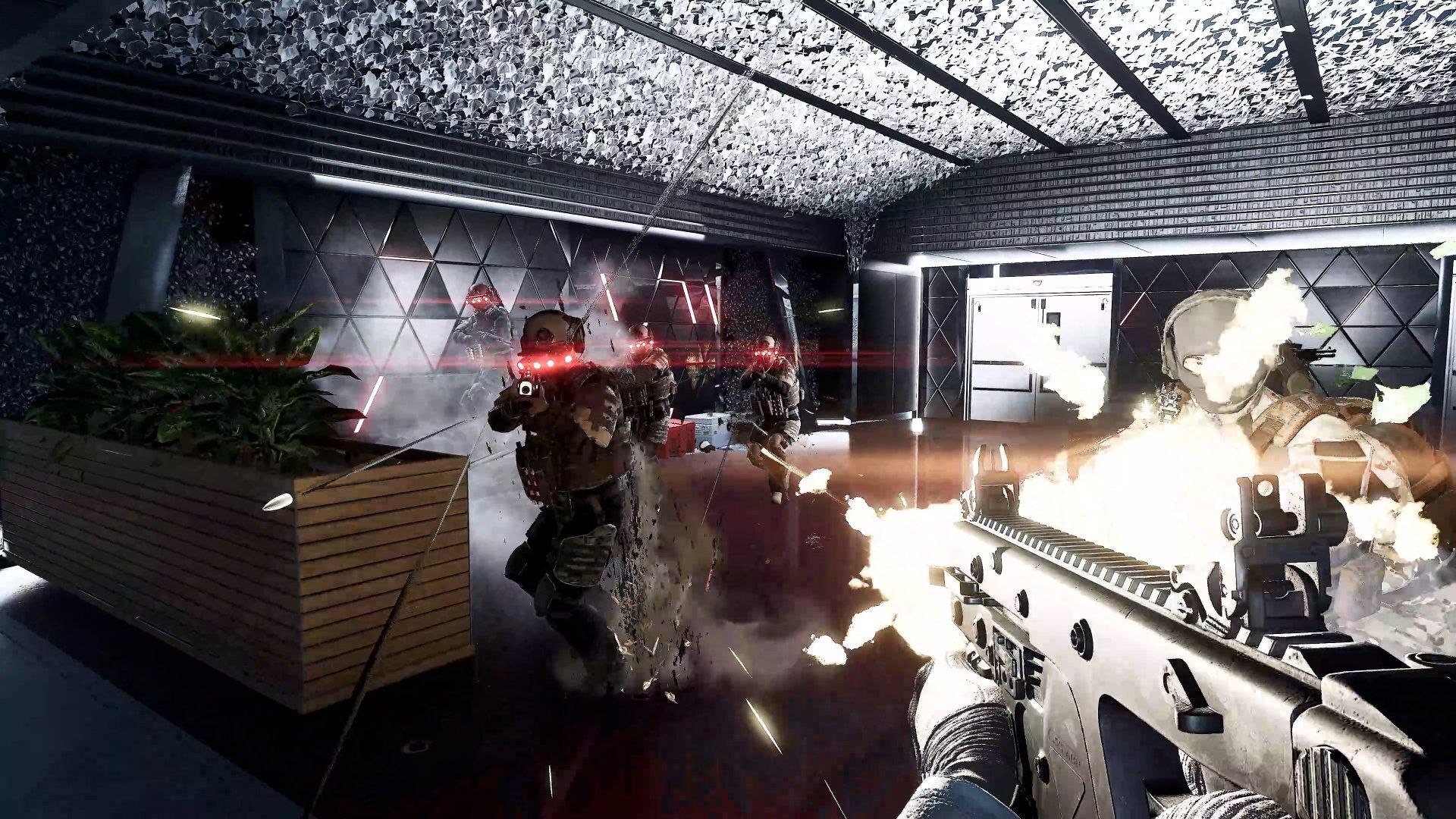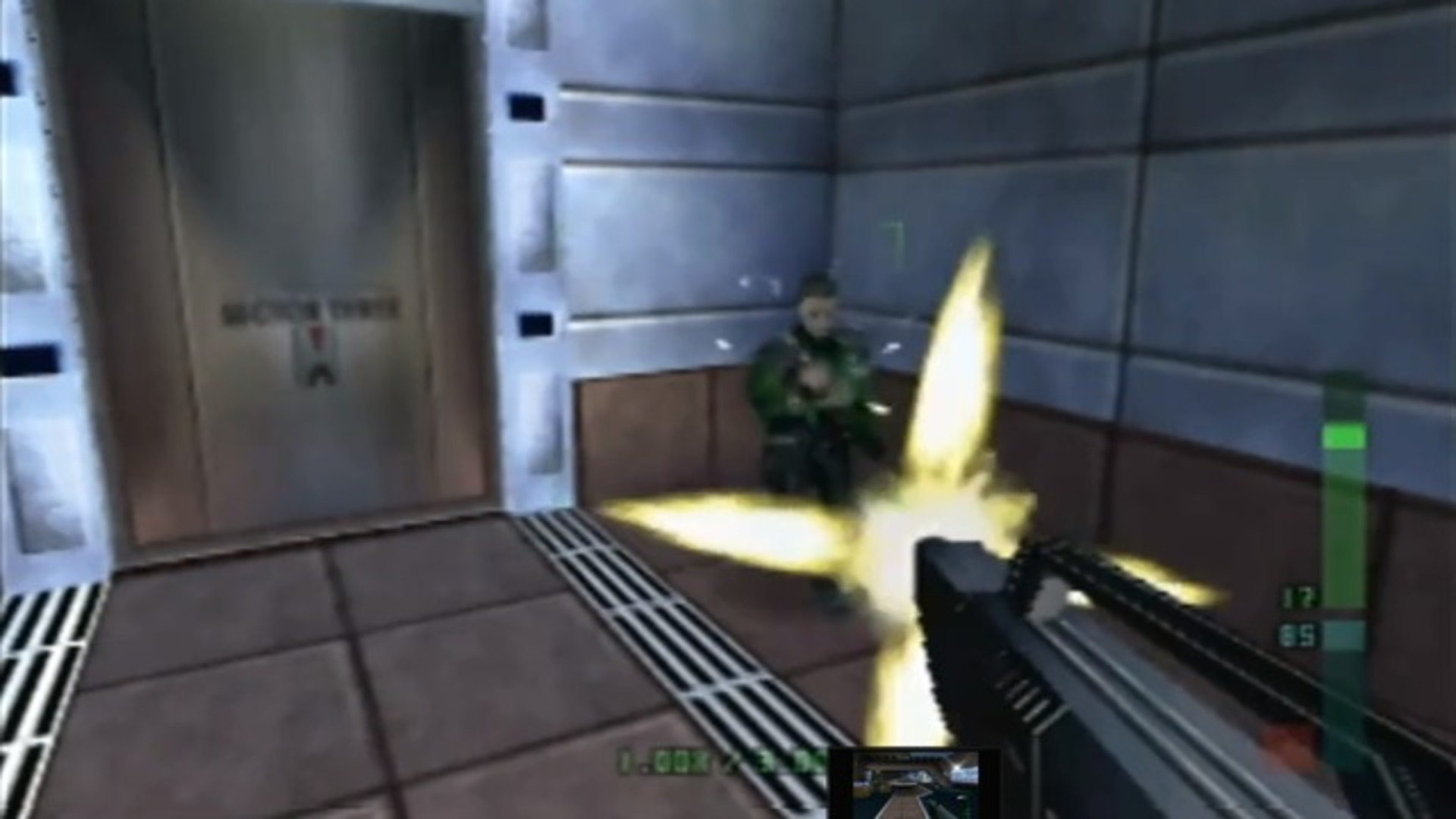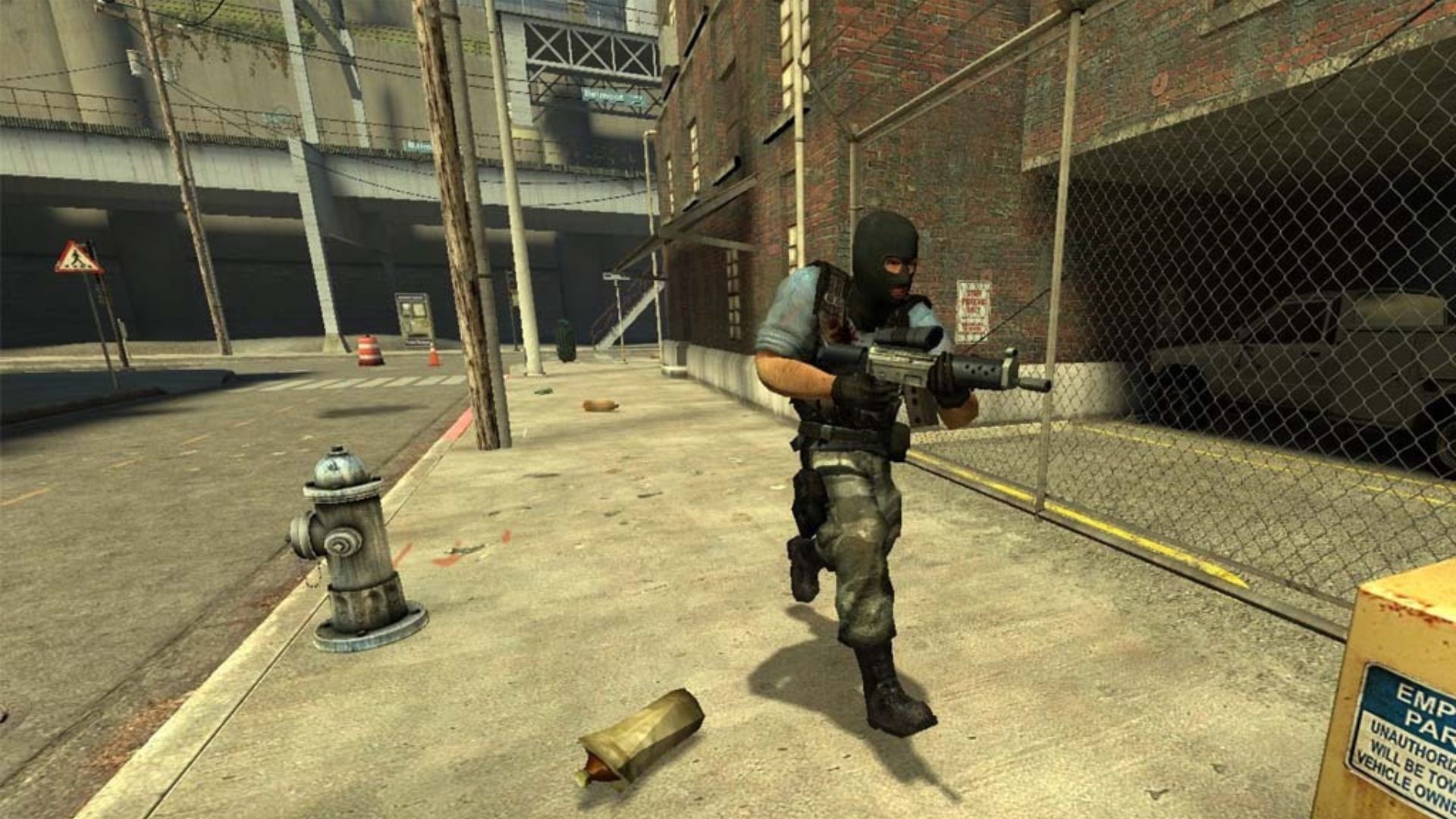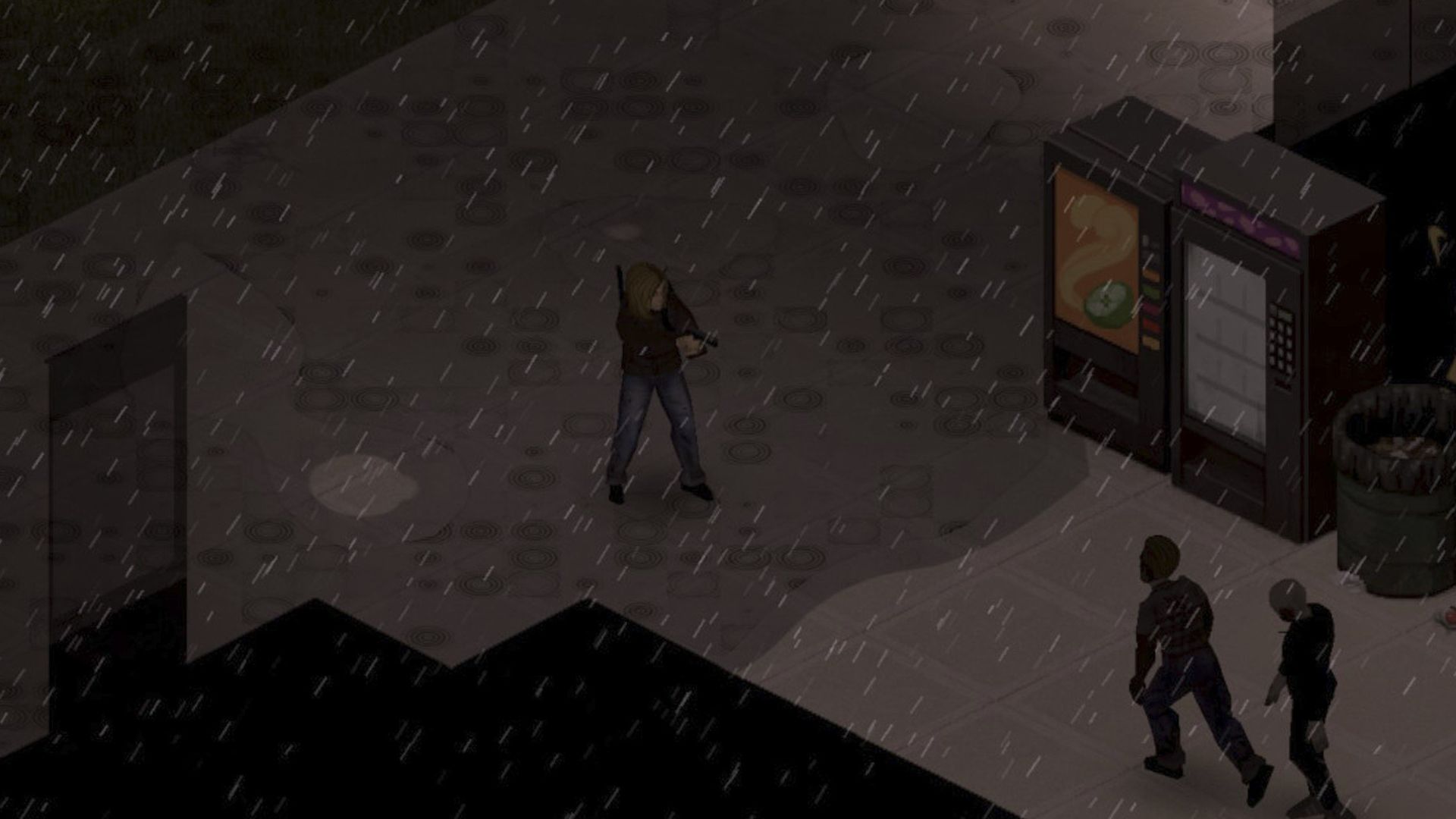
Experience Points is a fortnightly chat with people in and around the games industry to talk about the most important games in their lives, whether that’s working on them, being inspired by them or just playing them.
Many musicians might claim music runs in their blood, but 29-year-old Brandon McKagan has more evidence for it than most. The composer and level designer for spectacular first-person shooter Trepang2 is the great-nephew of Duff McKagan, the bassist of the legendary hard-rock band Guns 'n' Roses. Brandon says this affinity with music extends to the rest of the family. "It's automatic for us," he says. "I am proud of how easy it is for my entire family to pick up an instrument and then write some really cool s**t."
Yet while McKagan has this ingrained passion and talent for music, he doesn't share his great uncle's comfort in the spotlight. "I was the only one that felt like I didn't want to be on stage," he explains. "I've always hated cameras, I've always wanted to be in my little hidey-hole."
It was in this hidey-hole where McKagan discovered his other passion, video games. "There's a whole video of me, I was about two or something, and I was playing Super Mario World…and then all of a sudden, I took a Mountain Dew bottle, apparently, and said cheers and chugged it," he says. "I became that gamer nerd."
Over time, McKagan's twin passions of music and gaming would become deeply intertwined, eventually leading him to write the pulsing metal soundtrack to Trepang Studios' exhilarating throwback shooter. Below are four of the games that most resonated with McKagan on his journey to becoming a professional video game composer.
Banjo-Tooie

McKagan's taste in music developed early and eclectically. Rock and metal have always been major fixtures in his life, partly because of his relation to Duff, but also because his father was a huge metal fan. "Dad was always really into Slipknot and really into Tool."
McKagan's relationship with his parents is complicated, saying his father "wasn't a cool guy, at certain times," and hinting that their approach to parenting was often hands-off. "My mom would give me video games, my dad would give me metal, and then they would just kind of eff off and do their own thing."
While the bands he was left with included Linkin Park and System of a Down, the games he was left were all Nintendo and thus had a very different musical bent. "The music for anything Nintendo, it doesn't matter if it's Majora's Mask, or Smash Bros, or anything in that N64 era. It's been what I wanted to write" he says. "I wanted to write little catchy melodies that made me want to bop my head."
The Nintendo soundtracks McKagan loves most aren't the obvious touchstones like Mario or Zelda. Instead, it's the music of Grant Kirkhope, the Scottish composer behind the soundtracks of Rare's most celebrated games, like GoldenEye 007 and Banjo Kazooie. Indeed, one of McKagan's favorite video game soundtracks is Kirkhope's score to Banjo-Tooie from 2000, the sequel to Banjo-Kazooie.
[It's] the catchiness of it, "McKagan says. "Every single song from Spiral Mountain all the way to Hellfire Peaks or Mayaman Temple, they're all so memorable." McKagan was also entranced by the soundtrack's responsiveness. "You go underwater, and it'd be like a separate version. It would be muffled with xylophones or marimbas or whatever he used. It was so cool to have it be so immersive in the game like what's happening is what I'm hearing."
Kirkhope's work would directly influence McKagan's own early projects composing for games. Around 2018, McKagan wrote the soundtrack for a small indie platformer named Heroes of Umbra, developed by Andrew Kotori. "I used Grant Kirkhope as a fantastic example of how to write a catchy melody while still having emotion, and I did a lot of studying about chord progressions and what chords mean in terms of psychology."
Perfect Dark

Although Banjo-Tooie is a landmark game for McKagan's, this is mainly because of the soundtrack. "I think I have more hours listening to the soundtrack than playing the game," he says. But another Rare title, released the same year, would enthral McKagan in all its qualities, the spiritual successor to GoldenEye, Perfect Dark.
Even so, McKagan's admiration for Perfect Dark started with the soundtrack. "Perfect Dark was just 'it' for me. It had synth, it had metal, it had techno," he says. "When you're going through a giant raid of a facility, there could be some metal playing, with some synth behind it, some simple acid synth from the nineties. Man, I just can't get enough of it."
But McKagan also grew to appreciate the broader design of Perfect Dark. The structure of the levels, the blend of stealth and shooting, and the function of the game's weapons. "Perfect Dark is an art form," McKagan says. Rare's shooter would also influence Trepang2's design. Some of these were passing references to Rare's shooter. "We called our horde [mode] 'Combat Simulator' as a little homage to Perfect Dark," McKagan points out. Meanwhile, the design of Trepang2's minigun, for example, was inspired by a weapon in Perfect Dark known as the Reaper, the gigantic spinning barrel of which functions both as a Gatling gun and a drillbit "It would shoot really fast, and then you could grind up people up," McKagan says. "I thought it was a little goofy for Trepang [but] we thought it would work."
Counter-Strike: Source

While Nintendo provided the heart of McKagan's influences, his more pragmatic, game developer side chiefly derives from Valve. "Valve games, with how immaculate their Source Engine is, and how moddable it is. Modding is totally up my alley."
McKagan's appreciation for Valve's works began with Counter-Strike: Source, which was his go-to game as a teenager. "For years, that's all I played, I didn't make any music, I didn't do anything productive…a lot of it was just to escape the realities of being a teenager, and just live in that world."
But those years of apparent unproductiveness planted a seed in McKagan's mind. "I liked the Source engine, I want[ed] to make music for this engine, and then I found out [about] GoldSrc." GoldSrc is the game engine Valve designed prior to Source, notable for its extensive modding tools, and the huge modding community that has built up around them. GoldSrc was the window through which McKagan entered game development, writing the music for various Half-Life mods. Many of these would never see release. "They would always say "'Oh, we're going to release this game, and then they wouldn't because something would fall through with either a publisher or some internal conflict that was going on that was out of my control." But the experience proved valuable later on, working on Heroes of Umbra and eventually Trepang2.
Counter-Strike: Source was also significant in McKagan's work designing levels for Trepang2, such as the game's oil-rig side-mission. "Mapping was all Counter Strike focussed. What would be a good concentric circle, what would be a good flow?" McKagan says. Level design was nonetheless a secondary role for McKagan, one in which he was still cutting his teeth. "I didn't know what I was doing," he says. "It was mainly the rest of the team figuring out campaign stuff."
Project Zomboid

McKagan's relationship with Valve games and the GoldSrc community has left him with a fondness for any game that has extensive modding or customization tools that let players create their own experiences. He highlights TheIndieStone's Project Zomboid as a particularly adept example of this.
"Project Zomboid does it immaculately. I've been following their work since the Jura days," he says. "It's its own sandbox, it's moddable, which is insane. It's fun. Every time I play is different." McKagan would love to see a version of Trepang2 that had Zomboid's capacity to let the player create their own narratives. "If Trepang could have something like that, where you could create your own story, and everything is dynamic, ah!"
And this might be more than wishful thinking, in a more limited sense at least. While McKagan is hesitant to make any promises, one feature of Trepang2 the developers are looking to improve post-release is its customization options. "What we launched with the character customization, we could do better," he says. "What if we gave the player a camo texture and had a bunch of different color masks, and they can select it from in-game, save that camo and then just use it? Or better yet, what if they can upload a picture to the game and then use that as a camo?" Trepang Studios would also like to implement a cut feature from development called "Build-a-merc", which lets players customize both friendly and enemy NPCs and then spawn them in-game. "The build-a-merc, we hope to have that soon. No promises yet, but it would be really nice to share some NPCs with people."
Trepang2 is out now on Steam. A console release is planned, although no release date has been announced.
Trepang2 will be appearing at progressive metal festival Radar which is taking place in Manchester at the O2 Victoria Warehouse from 28-30 July.
The action-packed FPS offers a different experience from what you'd usually find in our list of best FPS games, and with a console release date yet to be announced, it's worth looking at the best Xbox Series X games and the best PS5 games to pass the time while you wait.







